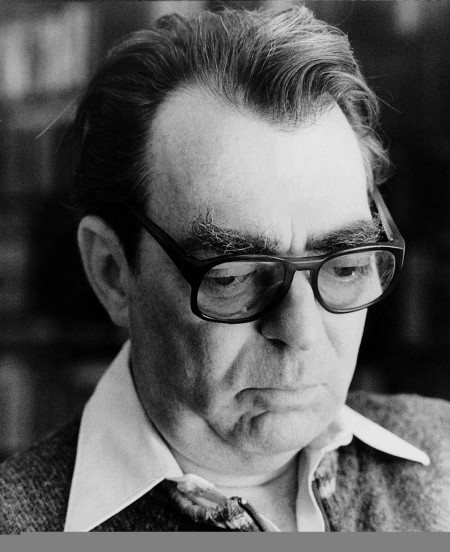
27 February 1921, Szászváros - 6 December 2007, Budapest
András Szőllősy belongs to the generation of the „great seventies" of Hungarian composers with Ligeti and Kurtág. He pursued his high school studies at Kolozsvár then came to Budapest in 1939 where he enrolled to the Hungarian-French department at the Eötvös College of the University of Sciences and in composition at the Academy of Music. He was a student of Kodály for one and a half years and he transferred to the class of Albert Siklós only because Kodály retired. He completed his studies at the Academy of Music finally in the class of János Viski, after the early death of Siklós. He could not finish the „full Kodály-school" as the former generation could during the calmer 1920s and 1930s, however, the analysis of the works amply made up for the university classes for him as he wrote his university doctoral thesis – which was also published as a book in 1943 – with the title of Kodály művészete [The Art of Kodály].
He attended the master school of Goffredo Petrassi for one academic year in Rome, after the war. He was invited to teach at the Academy of Music in 1950, where he had been teaching for four decades. His former students carried the impact of his radiant personality for a lifetime, even those who could not hear his enthusiastic music history lectures because later he substituted that subject for the education of score reading and transposition. The teaching at the Academy of Music joined his scientific work of the 1950s and 1960s - and the composition getting more and more intense from the 1970s - as a counter voice.
The double aim is clearly outlined in the row of his scientific publications: the service of the two great masters of Hungarian music: to catalogize the works of Bartók and Kodály and publish their writings. The Bartók-catalogue of Szőllősy was especially successful, its numbering with the indication of the letter „Sz" is used Worldwide in biographies, concert programs and recordings.
Although his compositional career had a difficult beginning, it was delayed by the excessive self-criticism and the bad political atmosphere, above all. He himself confessed about it: „...At the mid-50s it became evident for us that we have to orientate ourselves to other ways and that our separation from the new European musical streams inescapably push us to a sort of provinciality. We started to talk about it within a narrow circle of friends. Rudolf Maros, György Ligeti, Kálmán Halász belonged to that circle besides me. Ligeti and Halász were not Kodály disciples, the disengagement was easier for them. They both settled abroad in 1956, so the two of us (Maros and me) remained who were amongst the first in Hungary in seeking new ways. He had a course pursued with Hába in Prague; I had one year spent with Petrassi behind us as an encouragement."
The Tre pezzi per flauto e pianoforte composed for Severino Gazzelloni marked the turning point, or better to say: the composer's finding of his own voice. The row of international successes of Szőllősy's works began with the III. Concerto which won first prize at the international Tribune of broadcasting corporations in Paris in 1970. András Szőllősy got to the two large-scale works of 1972, the Trasfigurazioni and the Musica per orchestra, standing close to and complementing each other, by proceeding on the way he began in the Concerto. The apparatus of the two works already show the new kind of conception of the symphonic sounding: large symphonic orchestra without having percussions and plucked instruments, expressing the composer's opposition of the fashionable „tinkling" ideal of sounding at the time.
Szőllősy's interest turned towards the vocal genre at the beginning of the 1980s: four vocal compositions – tightly connected and very different-faced at the same time - were born: one for mixed choir (In Pharisaeos), one for female choir (Planctus Mariae), and two sextets at the order of the World famous The King´s Singers (Fabula Phaedri, Miserere). From the second half of the decade instrumental chamber music came into the forefront. The thought of death is not only recurring but permanently present in the life achievement of Szőllősy. Not the fear from his own death but the mourning and grief and the vacuum left by the departed which is not and can not be filled. He composed dirges for the deaths of Stravinsky and Maros, saluted the remembrance of Kodály in the Musica per orchestra. Therefore, it is not surprising that after the String Quartet and Elegy of sad tone, composition was inspired by grief again in 1997, in this case for solo cello and string quartet, titled as Passacaglia.
The societal recognition of his significant work as a musicologist and composer was expressed first by the Erkel-prize in 1971, which was followed by further, greater awards in the 1980s: Kossuth-prize (1985), Bartók Béla–Pásztory Ditta- prize two times (1986, 1998), and the title of „Commandeur de l'Ordre des Arts et des Lettres" given by the French government in 1987. The Széchenyi Academy of Literature and Arts chose András Szőllősy as a member in1993.
K. J.


